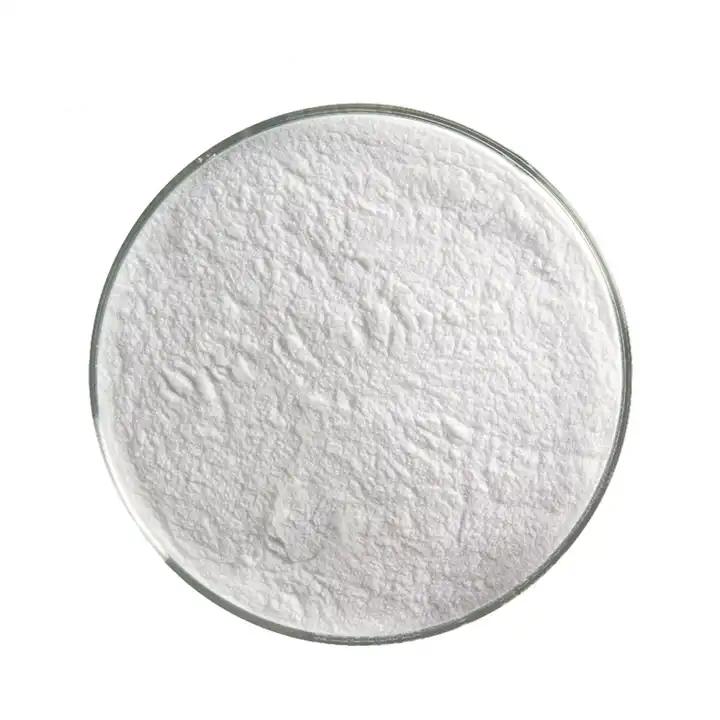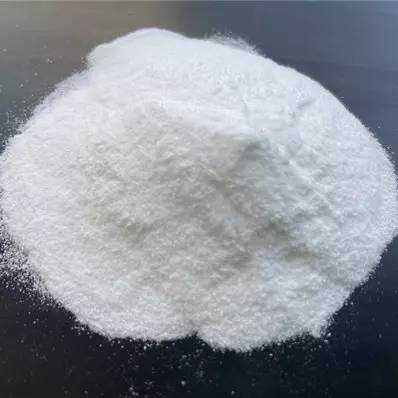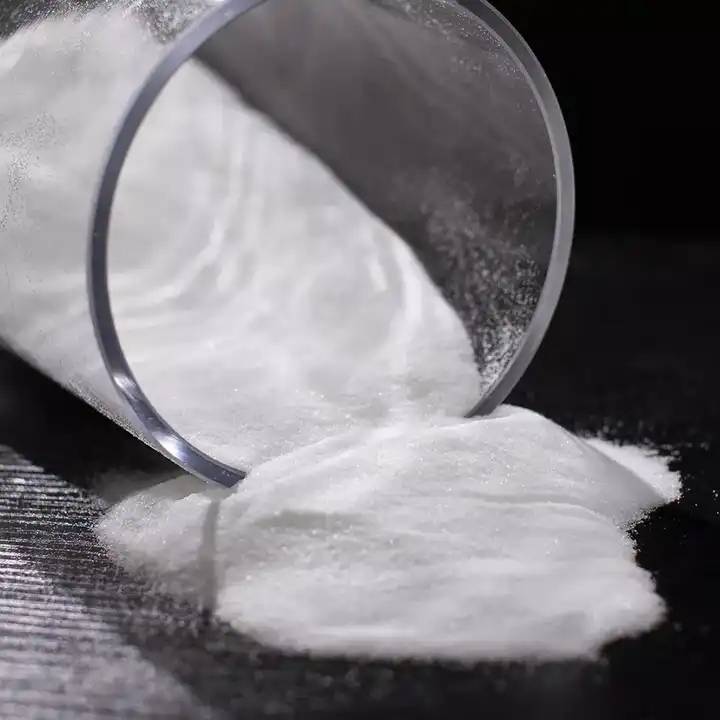Polyglutamate de Sodium pour la peau 98%
Nom de produit: Polyglutamate de Sodium pour la peau
Analyse :≥98%
Méthode d’essai :HPLC
Apparence: poudre blanche
Résidu de Pesticide: conforme à la norme (ce) No 396/2005
- Description Description
- Fiche technique
- Certificat de formation
-
Qu’est-ce que le Polyglutamate de Sodium pour la peau?
Sodium polyglutamate, also known as natto gum and sodium polyglutamate. It is a water-soluble, biodegradable, non-toxic biopolymer produced by microbial fermentation. Monosodium polyglutamate is a sticky substance that was first discovered in "natto" - fermented beans. Sodium polyglutamate is a special anionic natural polymer, homo-polyamide formed by amide linkage between α-amino and γ-carboxyl. Sodium polyglutamate for skin has a molecular weight ranging from 50,000 to 2,000,000 daltons.
La structure de base du polyglutamate monosodique est constituée de 5 000 à 10 000 molécules d’acide glutamique polymérisées par liaison gamma-amide. Il y a un grand nombre de groupes hydroxyle, groupes carboxyle, et d’autres groupes polaires dans la molécule. Il peut former des liaisons d’hydrogène à l’intérieur et entre les molécules et lier une grande quantité d’eau, avec un effet hydratant évident. Il peut également améliorer la peau et#39; S propre contenu NMF, hydratant et verrouillant l’eau de l’intérieur. C’est un ingrédient hydratant naturel, plus sa structure tridimensionnelle unique et différents poids moléculaires de sodium acide polyglutamique de coopération, formant de multiples effets de fixation de l’eau, et est maintenant largement utilisé dans les matières premières hydratantes cosmétiques.
Polyglutamate de Sodium pour la peau se réfère généralement à Polyglutamate de Sodium de poids moléculaire élevé (>700kDa), habituellement autour de 800,000Da produits de Polyglutamate. Il est principalement utilisé comme agent hydratant, ajouté aux masques pour le visage, aux crèmes du matin et du soir, aux shampooings, aux pommades de soins de la peau, etc. Il peut embellir et blanchir la peau avec une hydratation complète, inhiber en douceur l’activité de la tyrosinase ainsi que inhiber la production de mélanine, qui peut hydrater en profondeur et éclaircir la peau.
Il existe de nombreuses méthodes pour la production de polyglutamate de sodium γ-PGA, qui peuvent être classées en gros en trois types: la synthèse chimique (synthèse peptidique traditionnelle, méthode de condensation des dières), la méthode de conversion enzymatique, et la méthode de fermentation microbienne. Les deux premières méthodes présentent certaines limites, comme un faible rendement, une qualité impure, un fonctionnement difficile et un appauvrissement élevé. Par conséquent, la synthèse de fermentation microbienne est actuellement la principale méthode de production de polyglutamate monosodique.
La technologie Green Spring produit de l’acide polyglutamique nano à faible teneur moléculaire avec une pureté ≥ 98,0% (HPLC/HPLC) en utilisant un nouveau processus de biologie synthétique, qui est sûr, rafraîchissant et facile à absorber. Comparé à l’acide polyglutamique sodium macromoléculaire, il a de meilleurs effets hydratants et antioxydants et est un nouveau type d’ingrédient anti-âge doux. Il a une large perspective d’application dans les cosmétiques, les produits de toilette, et le traitement environnemental.
Spécification:
Nom du produit
Cosmétiques matière première Polyglutamate de Sodium
CAS non.
28829-38-1
analyse
98%
Méthode d’essai
HPLC
apparence
Poudre blanche
Résidus de pesticides
Conforme à la norme (ce) n ° 396/2005
Règlements:
Il est conforme à la réglementation de l’ue.
Vous cherchez un devis?Benefits:
Moisturising
The hydrogel of sodium polyglutamate is a colorless, odorless, transparent and soft gel with a unique three-dimensional spatial structure, capable of forming a variety of water-locking effects, and therefore possesses superb water-absorbing and moisturising ability. And according to the results of the 28-day experiments, PGA can prevent the loss of water within the skin for a longer period of time, and its long-term moisturising effect is superior to that of sodium hyaluronate and collagen.
Anti Aging
Sodium polyglutamate has the effect of inhibiting the activity of hyaluronidase in the skin, alleviating the degradation of hyaluronic acid in skin connective tissue caused by the activation of hyaluronidase, and preventing skin loss of elasticity and wrinkles caused by loose skin connective tissue.
Whitening
Sodium polyglutamate not only has a strong moisturizing ability but also can effectively inhibit the growth of melanin to achieve whitening and blackening effects. Although Vc and other effective ingredients have a good whitening effect, in ultraviolet light failure, is easy to oxidation, and polyglutamic acid can achieve a whitening effect and defense against ultraviolet radiation double effect, and low molecular PGA "white" more gently.
Applications:
In Cosmetics:
Because of the unique structure of sodium polyglutamate, they have good water absorption and water retention properties, and there are already cosmetic products on the market that use sodium polyglutamate as ingredients. When used as a cosmetic ingredient, the functions of sodium polyglutamate with different relative molecular masses are different. More than 2,000 kDa of sodium polyglutamateγ-PGA has a film-forming property, which can effectively prevent water loss, and sodium polyglutamate of 1-10 kDa are favorable for transdermal absorption, which can deeply moisturize and care for the skin.
In Pharmaceutical:
Low relative molecular sodium polyglutamate has better biocompatibility and biodegradability, so it can be used as a drug carrier. The degradability of sodium polyglutamate can enable the release of drugs at the appropriate time, so that the drug can be utilised more fully and the therapeutic effect is better.
In Environmental Treatment:
The disadvantages of commonly used flocculants in sewage treatment, such as aluminum salt, iron salt, and polyacrylamide, are more obvious. Sodium polyglutamate has a better adsorption effect on heavy metals and rare earth elements, and it is non-toxic and non-polluting itself, and it can be biodegraded, so it is a kind of environmentally friendly flocculant.
In Agriculture:
The hydrophilic group carboxyl group in the molecule of sodium polyglutamate has the functions of maintaining soil moisture content, improving soil swelling and porosity, improving sandy soil, and promoting the improvement of soil fertility and water retention capacity. It can prevent the precipitation of sulfate, phosphate, oxalate and metal elements, enabling crops to more effectively absorb phosphorus, calcium, magnesium, and trace elements in the soil. Therefore, sodium polyglutamate is also widely used in agriculture.
-
Télécharger le document
Polyglutamate de Sodium pour la peau 98% COA
-
Télécharger le document
Cosmos 2023
Télécharger le documentHalal 2023
Télécharger le documentCasher 2023


 Anglais
Anglais français
français espagnol
espagnol russe
russe coréen
coréen japonais
japonais












